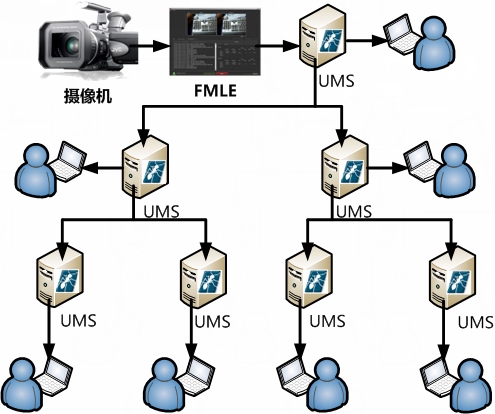一:背景
作为一名C++开发人员,我一直很期待能够像C#与JAVA那样,可以轻松的进行对象的序列化与反序列化,但到目前为止,尚未找到相对完美的解决方案。
本文旨在抛砖引玉,期待有更好的解决方案;同时向大家寻求帮助,解决本文中未解决的问题。
二:相关技术介绍
本方案采用JsonCpp来做具体的JSON的读入与输出,再结合类成员变量的映射,最终实现对象的JSON序列化与反序列化。
本文不再讨论如何使用JsonCpp,此处将作者在应用时发现的两处问题进行说明:
1. 下载Jsoncpp,编译其lib,并且引用到项目中,发现有如下错误:
错误1 fatal error C1083: Cannot open compiler generated file: '../../build/vs71/release/lib_json\json_writer.asm': No such file or directory c:\Documents and Settings\Administrator\jsoncpp-src-0.6.0-rc2\jsoncpp-src-0.6.0-rc2\src\lib_json\json_writer.cpp
错误2 fatal error LNK1257: 代码生成失败 JasonSerialize
可以通过在修改LIB库项目的属性解决,如下图[关闭汇编输出]:
2. JSONCPP官网首页的下载版本是0.5.0,此版本不支持Int64等类型,下载版本jsoncpp-src-0.6.0-rc2后即可支持.
三:一个基于JsonCpp的序列化与反序列化基类
先看代码:
#pragma once
#include <string>
#include <vector>
#include "json/json.h"
using std::string;
using std::vector;
struct CJsonObejectBase
{
protected:
enum CEnumJsonTypeMap
{
asInt = 1,
asUInt,
asString,
asInt64,
asUInt64,
};
public:
CJsonObejectBase(void){}
public:
virtual ~CJsonObejectBase(void){}
string Serialize()
{
Json::Value new_item;
int nSize = m_listName.size();
for (int i=0; i < nSize; ++i )
{
void* pAddr = m_listPropertyAddr[i];
switch(m_listType[i])
{
case asInt:
new_item[m_listName[i]] = (*(INT*)pAddr);
break;
case asUInt:
new_item[m_listName[i]] = (*(UINT*)pAddr);
break;
case asInt64:
new_item[m_listName[i]] = (*(LONGLONG*)pAddr);
break;
case asUInt64:
new_item[m_listName[i]] = (*(ULONGLONG*)pAddr);
break;
case asString:
new_item[m_listName[i]] = (*(string*)pAddr);
default:
//我暂时只支持这几种类型,需要的可以自行添加
break;
}
}
Json::FastWriter writer;
std::string out2 = writer.write(new_item);
return out2;
}
bool DeSerialize(const char* str)
{
Json::Reader reader;
Json::Value root;
if (reader.parse(str, root))
{
int nSize = m_listName.size();
for (int i=0; i < nSize; ++i )
{
void* pAddr = m_listPropertyAddr[i];
switch(m_listType[i])
{
case asInt:
(*(INT*)pAddr) = root.get(m_listName[i], 0).asInt();
break;
case asUInt:
(*(UINT*)pAddr) = root.get(m_listName[i], 0).asUInt();
break;
case asInt64:
(*(LONGLONG*)pAddr) = root.get(m_listName[i], 0).asInt64();
break;
case asUInt64:
(*(ULONGLONG*)pAddr) = root.get(m_listName[i], 0).asUInt64();
break;
case asString:
(*(string*)pAddr) = root.get(m_listName[i], "").asString();
default:
//我暂时只支持这几种类型,需要的可以自行添加
break;
}
}
return true;
}
return false;
}
protected:
void SetProperty(string name, CEnumJsonTypeMap type, void* addr)
{
m_listName.push_back(name);
m_listPropertyAddr.push_back(addr);
m_listType.push_back(type);
}
virtual void SetPropertys() = 0;
vector<string> m_listName;
vector<void*> m_listPropertyAddr;
vector<CEnumJsonTypeMap> m_listType;
};
此类主要有三个函数:Serialize、DeSerialize及 SetPropertys、SetProperty,其中前两个函数主要是用来实现对象的序列化与反序列化;SetPropertys是一个纯虚函数,如果一个类需要具备序列化功能,只需要从此类继承,同时调用SetProperty函数,将各个字段的属性进行设置即可。
四:使用对象的序列化及反序列化功能
要使对象具体相应功能,需要继承上述的基类,如下:
struct CTestStruct : public CJsonObejectBase
{
CTestStruct()
{
SetPropertys();
}
ULONGLONG MsgID;
string MsgTitle;
string MsgContent;
protected:
//子类需要实现此函数,并且将相应的映射关系进行设置
virtual void SetPropertys()
{
SetProperty("MsgID", asUInt64, &MsgID);
SetProperty("MsgTitle", asString, &MsgTitle);
SetProperty("MsgContent", asString, &MsgContent);
}
};
继承后,我们可以使用如下代码来进行测试
序列化:
void CJasonSerializeDlg::OnBnClickedOk()
{
CTestStruct stru;
stru.MsgID = 11223344;
stru.MsgTitle = "黑黑";
stru.MsgContent = "哈哈";
CString strTest = stru.Serialize().c_str();
AfxMessageBox(strTest);
}
结果:

反序列化:
void CJasonSerializeDlg::OnBnClickedOk2()
{
const char* pstr = "{\"MsgContent\":\"哈哈22\",\"MsgID\":11111111111111111,\"MsgTitle\":\"黑黑22\"}";
CTestStruct stru;
stru.DeSerialize(pstr);
CString strShow = "";
strShow.Format("MsgID:%I64u\r\nMsgTile:%s\r\nMsgContent:%s", stru.MsgID, stru.MsgTitle.c_str(), stru.MsgContent.c_str());
AfxMessageBox(strShow);
}
结果:

五:未解决的问题
1. 目前我对属性的映射采用的是vector顺序映射的方式,这样必需在子类中对每一个属性进行设置,是否有宏的策略可以使这部分工作更加轻松?
2. 目前只支持整型、64位整型及字符串类型,需要支持其他类型,可以在基类中添加映射即可。
3. 目前只支持单个简单对象[其属性均为简单类型]的序列化与反序列化,暂时未考虑如何支持复杂的,如内部包含其他的复杂对象、包含数组等情况。







